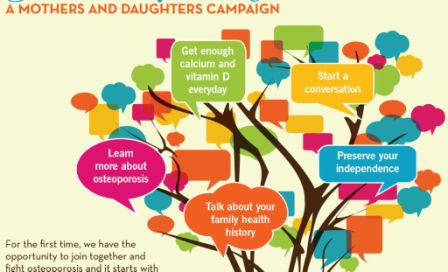 The National Osteoporosis Foundation (NOF) announced this month that in connection with National Osteoporosis Awareness and Prevention Month, which is observed each year in May, it is launching a new campaign, called Generations of Strength®.
The National Osteoporosis Foundation (NOF) announced this month that in connection with National Osteoporosis Awareness and Prevention Month, which is observed each year in May, it is launching a new campaign, called Generations of Strength®.
“NOF’s Generations of Strength Campaign encourages women and men to start conversations about bone health and family history as the first steps to protecting themselves and future generations from osteoporosis,” the NOF said on its website for National Osteoporosis Month 2012.
Through its annual observance of Osteoporosis Awareness & Prevention Month, the NOF focuses on educating the public on the importance of bone health and osteoporosis prevention, including nutrition, lifestyle choices and exercise.
The National Osteoporosis Foundation (NOF) is a non-profit organization which states that it is the nation’s leading voluntary health organization solely dedicated to promoting lifelong bone health and fighting osteoporosis. The NOF’s goal is to reduce the widespread prevalence of osteoporosis and associated fractures and to find a cure for the disease through programs of awareness, education, advocacy and research.
About Osteoporosis
“Bone health must become a priority for all Americans. Approximately one in two women and up to one in four men over age 50 will have an osteoporosis-related fracture in their remaining lifetime,” said Robert Recker, MD, president of the National Osteoporosis Foundation.
Up to half of all U.S. residents older than age 50 will be at increased risk for fractures from osteoporosis by 2020, unless they change their diets and lifestyles, according to the U.S. Surgeon General.
“Women over the age of 50 or postmenopausal women have the greatest risk of developing osteoporosis,” according to the Cleveland Clinic. “Women experience rapid bone loss during and 5 to 10 years after menopause. Menopause decreases the production of estrogen, a hormone that protects against excessive bone loss.”
According to information provided by the NOF, “Osteoporosis is a condition in which the bones become weak and can break more easily. In serious cases, something as simple as a sneeze can cause a bone to break.”
About 10 million Americans already have the disease, and about 34 million are at risk, according to the NOF.
“Estimates suggest that about half of all women older than 50 will break a bone because of osteoporosis. Up to one in four men will too,” the NOF states on its website.
Broken bones due to osteoporosis are most likely to occur in the hip, spine and wrist, but other bones can break too. Osteoporosis can also affect posture, causing you to become stooped or hunched. This happens when the bones of the spine, called vertebrae, begin to break or collapse, the NOF explains.
“Twenty percent of seniors who break a hip die within one year from problems related to the broken bone itself or surgery to repair it. Many of those who survive need long-term nursing home care,” the NOF states.
“In 2005, osteoporosis was responsible for an estimated two million fractures and $19 billion in costs. By 2025, experts predict that osteoporosis will be responsible for approximately three million fractures and $25.3 billion in costs each year,” according to the NOF.
Additional facts and statistics about Osteoporosis are provided by the U.S. Centers for Disease Control & Prevention (CDC) on its FASTSTATS – Osteoporosis web page.
The good news is that Osteoporosis is preventable and treatable.
“With more than 40 million Americans at increased risk for bone fracture, it’s good to know that osteoporosis is a preventable and treatable disease,” the National Institutes of Health states on its Osteoporosis and Related Bone Diseases National Resource Center website.
The NIH urges all Americans to learn the risk factors for osteoporosis, and what you can do to keep your bones strong and healthy.
“It is never too late or too early to talk to your healthcare professional about osteoporosis and your bone health,” Dr. Robert Recker, President of the National Osteoporosis Foundation counsels.
Preventing Osteoporosis Through Lifestyle Choices
Thirty years ago, most people thought osteoporosis and the broken bones it can cause were a part of normal aging, but that view has changed with research, according to the NOF.
“We have learned that getting enough calcium, vitamin D and regular exercise are important for your bones. Eating fruits and vegetables is also good for bone health. On the other hand, eating poorly, smoking, drinking too much alcohol or not exercising can cause bone loss and osteoporosis,” the NOF states on its website.
“You’re never too young or too old to improve the health of your bones,” says the NOF. “Whatever your age, the habits you adopt now can affect your bone health for the rest of your life. Now is the time to take action.”
According to the Mayo Clinic, three factors essential for keeping your bones healthy throughout your life are:
- Adequate amounts of calcium
- Adequate amounts of vitamin D, and
- Regular exercise.
The Mayo Clinic offers these suggestions for boosting your bone health through exercise:
- “Combine strength training exercises with weight-bearing exercises.
- Strength training helps strengthen muscles and bones in your arms and upper spine.
- Weight-bearing exercises — such as walking, jogging, running, dancing, stair climbing, skipping rope, skiing and impact-producing sports — mainly affect the bones in your legs, hips and lower spine.
- Swimming, cycling and exercising on machines such as elliptical trainers can provide a good cardiovascular workout, but because such exercises are low impact, they’re not as helpful for improving bone health as weight-bearing exercises are.”
Following is a video on Battling Osteoporosis with Exercise:
For further information on Osteoporosis and Osteoporosis Prevention, see:
- About Osteoporosis – Information provided by the National Osteoporosis Foundation
- NIH Osteoporosis and Related Bone Diseases National Resource Center;
- Osteoporosis – PubMed Health, U.S. Library of Medicine, National Institutes of Health;
- Centers for Disease Control & Prevention (CDC) – Nutrition for Everyone: Basics: Calcium and Bone Health
- CDC FASTSTATS – Osteoporosis
- MedlinePlus on Osteoporosis – from U.S. Library of Medicine, National Institutes of Health
- International Osteoporosis Foundation – Resources on Osteoporosis and Musculoskeletal Disorders
More Information
See related HelpingYouCare™ reports on:
NIH Features New Report on Good Nutrition for Healthy Bones
Preventing Osteoporosis (Video)
Vitamin E Supplements May Weaken Bones, New Mouse Study Suggests
Osteoporosis Concerns: What’s New? Re-focus on Proper Movement and Posture
For more information on Osteoporosis, Arthritis & Rheumatic Conditions, see the HelpingYouCare™ resource pages on Arthritis, Osteoporosis & Rheumatic Conditions, including:
- Latest News
- What are these Conditions; Causes
- Symptoms & Diagnosis
- Prevention
- Treatments and
- Caregiving
_____________
Copyright © 2012 Care-Help LLC, publisher of HelpingYouCare™. All rights reserved.
NOTICE: If you are reading this article on any website other than HelpingYouCare.com, please click HERE to go to the original article. No website other than HelpingYouCare™ has been given permission to publish this article.
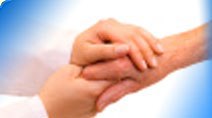





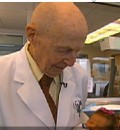
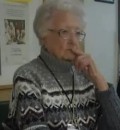

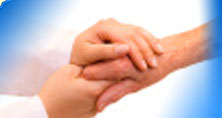


Recent Comments from our Online Community